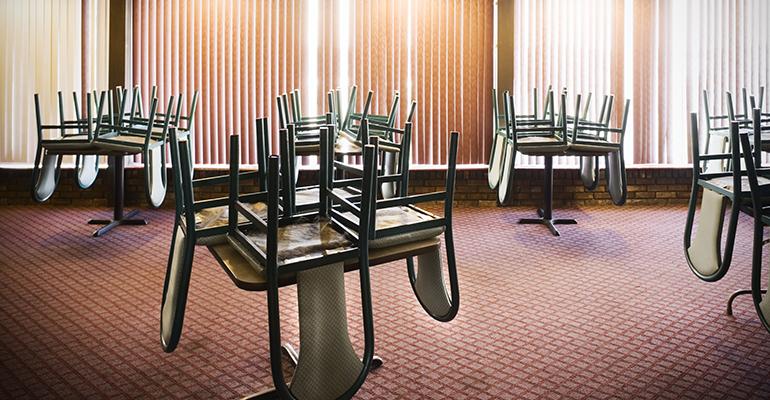As the days stretch into weeks of coronavirus-related business closures and government-mandated lockdowns, restaurant traffic data is continuing to change rapidly. On a weekly or even daily basis, restaurants have become an almost entirely virtual industry. Here’s how restaurant traffic is shaping up for the industry starting the week of March 24, according to the latest data from food industry market research firm, Datassential and digital engagement platform, Thanx.
Traffic continues to nosedive
Unsurprisingly, restaurant traffic is continuing to take a major hit as coronavirus lockdowns are added or strengthened around the country. Sales have declined 56% over the past week, according to data from Thanx, and the numbers keep dwindling weekly.
Purchase volume is down too: on Monday March 23, purchase volume was down 68% as compared with the six-week period before the crisis began. In the week prior, purchase volume was only down 42% and appears to be accelerating at this time.
Restaurant visits become almost entirely virtual
As the overall industry continues to struggle, businesses have almost completely pivoted to takeout, delivery and other off-premise options.
According to Datassential, 92% of traffic is now outside of the dining room, with drive-thru orders being the largest growing category, and accounting for nearly a third of traffic the week of March 24. Order-ahead is at 23% of traffic, delivery is at 21% and to-go dining is at 18%.
And although business seems dismal for the restaurant industry, online delivery is growing more than it had been pre-coronavirus. Overall, digital ordering is up 7% as compared with the six-week average pre-crisis. Most people are ordering on the weekends while restaurants are seeing a slight slowdown during the week as consumers try to rely on what’s in their pantry over consuming outside food.
Dinner is now the top daypart
The COVID-19 crisis is starting to shape the industry in other ways than just dampening revenues and traffic: according to Datassential, the lead daypart has shifted from lunch to dinner for most restaurants. About 16% of customers ordered from a restaurant for dinner on March 24, as compared with 12% who ordered lunch and 6% who ordered breakfast.
“We have to think about restaurants in a different way now,” Datassential group manager Mark Brandau said. “Since they are mostly off-premise now, it makes sense that we’re rethinking the dayparts too. A lot of people aren’t outside the house during the day, and lunch is one of those meals where you can get by with what’s already in the pantry/leftovers, or you might just extend snacking to cover the lunch period.”
His advice to restaurants? Take advantage of this shift and start offering bundled family meals that customers can use for dinner or even multiple meals.
Quick-service is king, while fine-dining is suffering
It’s bad news for white tablecloth establishments, as fine dining appears to have taken the worst hits during the pandemic. Purchase volume for fine dining restaurants has declined 98% and is approaching zero vs. the pre-crisis average, followed by a purchase volume decline of 62% for the coffee and snack category, and 58% for casual dining, according to Thanx data.
The one “winning” segment (or at least doing better than the rest of the industry) appears to be quick-service restaurants, which have seen a 45% decline in purchase volume, and right now limited-service restaurants are capturing more than two-thirds of restaurant traffic, according to Datassential.
Chain restaurants are particularly doing better than independent restaurants and make up three-quarters of the shares of restaurant traffic, as opposed to 25% for small businesses.
“My best guess is convenience and value is a huge factor in why people are visiting limited service over full service restaurants at a time like this,” Brandau said. “Limited service also has a bigger market share. […] If people are getting restaurant meals these days they are going to go with what’s more convenient: which restaurant has apps and drive-thru options.”
Consumer optimism remains stable
Despite the gloomy news for much of the restaurant industry, consumers still remain optimistic. According to Datassential, 66% of consumers believe that it will be safe to dine inside restaurants again in the next three months, will only 10% believing that it will take longer than six months for the industry to right itself.
Contact Joanna Fantozzi at [email protected]
Follow her on Twitter: @JoannaFantozzi





